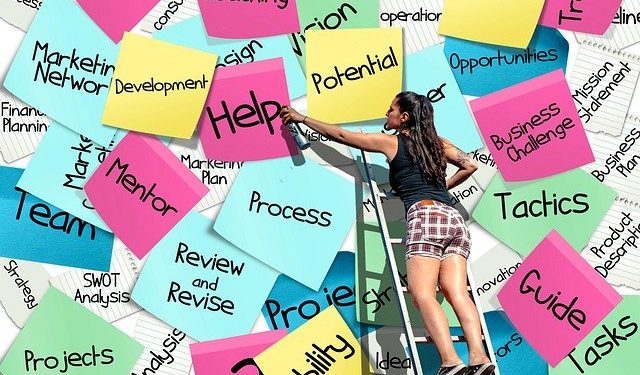Who makes up the senior team in your organisation?
Many organisations have noticed that the homogeneity of their people becomes particularly stark in more senior roles. The existence of a Gender Pay Gap across many sectors in the UK is a clear example of this lack of diversity.
When working with our clients on addressing this situation, we come across the common perception that they are working within a truly meritocratic system: You do your job well, receive a positive performance evaluation and then you are asked to take on a more senior role or larger project.
Yet in focus groups, another picture emerges. Some people recognise the process as described. Many, however, tell us that progression seems completely subjective. They tell us that, in order to progress in their organisation, it’s important to be visible, know the right people and be the ‘right sort of person’. Not only do these factors tend to be more decisive than performance, they also skew perception of what good performance entails.
So how can we solve this and ensure that it’s not just the dominant group – the group that tends to be better connected and informed – that is the beneficiary of this ‘meritocracy’?
How do we make the system more equitable by giving everyone a fairer chance of advancement?
How Empathy can help make progression more equitable
Let’s apply the first of our 8 Inclusive Behaviours℠ – Empathy – to help with the answer.
To do this, we must put ourselves in the shoes of those who find it harder to be visible, bond with the ‘right’ people or be ‘the right sort of person’. We must ask ourselves: what can we do to make it easier for them to progress without the need to be ‘part of the club’?
Here are 5 ideas that have worked for a number of our clients:
- Make the progression process more transparent.
Many employees report that they don’t know exactly what it takes to progress in their organisation and that the process is opaque at best! Empathetic managers will realise that this can be discouraging and daunting for team members who would like to progress but don’t know how. In this case, we recommended companies set out clearly what experience, skills and capabilities are required to progress. One example of this would be to design career progression maps that show various pathways to more senior roles. Another example is to list the requisite capabilities, skills and experiences required for the various levels of seniority. In this way, every employee knows what experience and skills they need to amass and demonstrate in order to progress.
- Find ways to allocate work more equitably.
This is especially important for projects that offer greater visibility or vital experience. For instance, consider ways that high profile projects can be rotated so everyone has a chance to work on them. The aim is to encourage everyone to step up, whilst understanding that not everyone is comfortable putting themselves forward. When that happens, the more coveted projects are no longer only available to those who have asked for them.
- Publish job roles widely.
When job roles are visible to all, the chance to apply is there for everyone. It becomes less important if someone is tipped off about a job opening and gives equal opportunity to those who don’t know ‘the right people’.
- Formalise (parts of) the progression process.
When the process is more formal, it’s less subjective, meaning that the contribution of those who are less visible will be more easily seen. For instance, consider publishing clear performance criteria that are measured objectively and communicated widely. Ideally use ways to assess skills that do not rely on interviews alone. For example, use role plays with real life scenarios or ask the candidate to do a particular task that is required for the role, such as a client presentation, working out a financial business case or designing an image for a computer game. Another example of formalising the progression process would be to set up a formal sponsorship system where senior leaders get actively involved in the progression of a minority staff member.
- Reduce the risk of failing in the next role.
People from underrepresented groups might be particularly reluctant to take a chance on a more senior role in case they don’t succeed in it. Organisations that are empathetic to this found that it helps to reduce the risk of a new step. One such company, for example, offers shadowing opportunities ahead of progression. Another offers a six-month trial period in a new role, after which the person can choose to return to their previous role and salary.
Empathy Training and Coaching
We recommend that you accompany these process changes with training for managers. Process changes are susceptible to sabotage if there isn’t a genuine understanding of the reasons for the change, and empathy for those that will benefit from it, but this can all be addressed with training. Once the premise is accepted and the changes adhered to, they help reinforce more empathetic, inclusive behaviour by managers and colleagues.
If you think your organisation’s progression process is not as inclusive as it should be, why not schedule a 30 minute call to talk to Inge about it?



